
That is why venomous snakes get all the attention.
The only non-venomous snakes that get featured in movies and documentaries are the giant constrictors. And it’s for the same reason: the potential danger.
But non-venomous snakes can be just as fascinating. They are in the vast majority, so they play a far more important role in the world, too.
And as snake owners, non-venomous snakes are a far better choice. If you are a first-time owner, they are the only sane choice.
You get all the benefits of snake ownership, without the dangers of owning a pet that can kill you.
It’s time to give non-poisonous snakes some attention, too. And that’s just what we’re going to do.
Table of Contents
Non Venomous Snakes
Apart from the danger factor, there is no definitive difference between venomous and non-venomous snakes. Just because they’re not poisonous, it doesn’t mean they won’t bite.
Non-venomous snakes make far better pets, though, especially for beginners. And there is such a huge variety colors, shapes and sizes, that there is certain to be a snake for every taste.
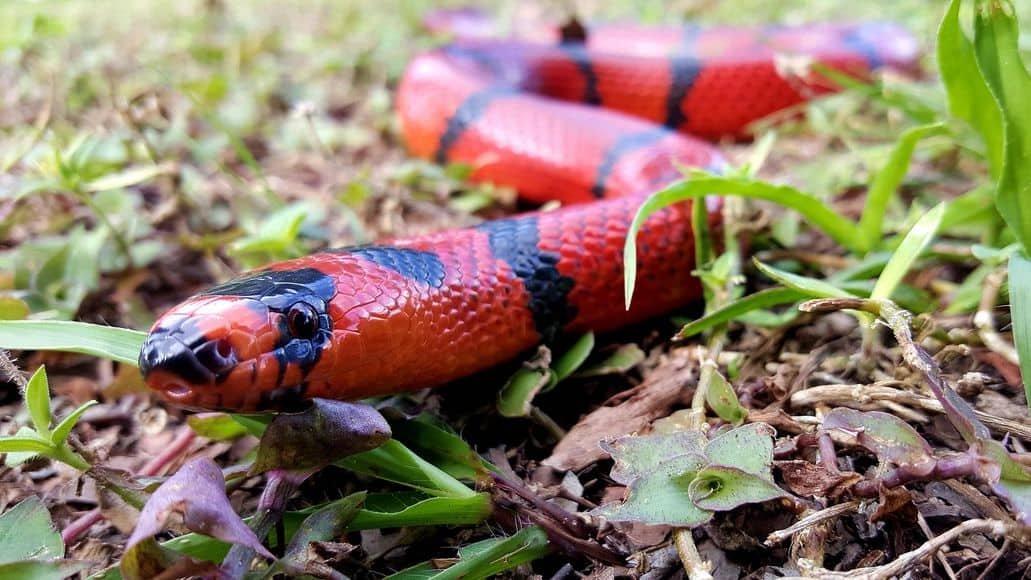
In this article, we’ll dive deeper into the beauty of non venomous snakes, covering their humongous benefit to the planet and their suitability as pets.
Non-Venomous Snakes As Pets
Are these safe yet savvy serpents decent candidates for a pet? Definitely. Handling poisonous snakes can be problematic, with a ton of safety concerns, but non-venomous snakes eliminate that problem.
Keeping non-toxic snakes is a safe practice and the more experience you get, the easier it becomes. They are a great starting place for getting involved with snakes, because making a mistake like letting it escape does not have the same repercussions as it would with a venomous snake.
Not only will you mentally feel more at ease, but you also won’t have to worry about the risk of possible death from a bite to you, a family member, or a neighbor.
Ultimately, non-venomous snakes are just as rewarding to own. You will come to understand snake behavior, its routine, the way it ticks, what it likes to eat and much more. This will make it easier to handle and eventually, you’ll become buddies and build a beautiful bond.
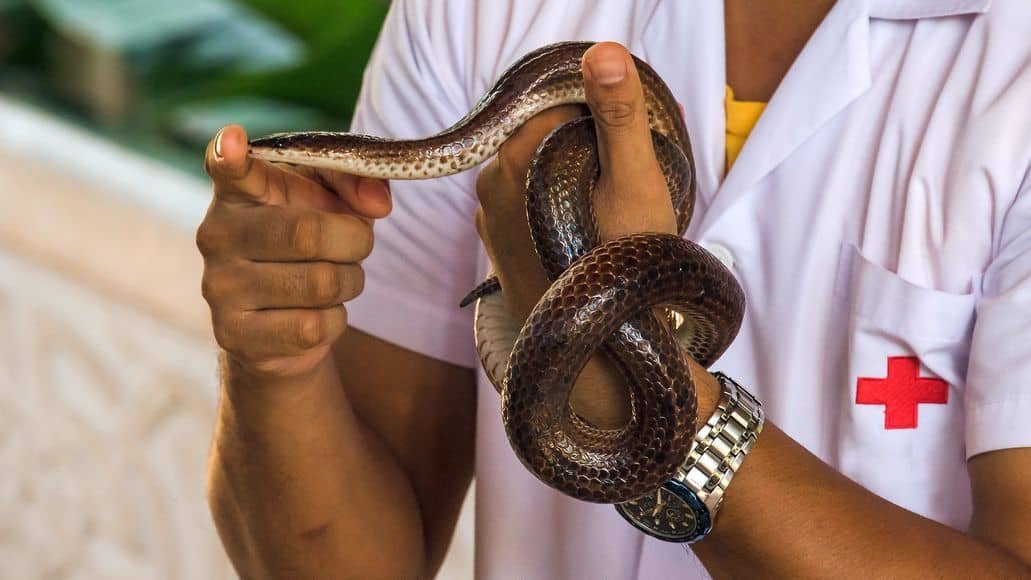
Even if you absolutely want to own a venomous snake, start small and understand you can expand. Learn how to keep snakes with a non-venomous species, then move on to a more dangerous one. The experiences you share with your first snake will continue with you forever, so soak up that training.
Whichever snake you get as a pet, research is a necessity and ensures you understand the behavior of any species you wish to own. Preparation is always key as a snake handler. Be prepared and avoid being scared!
The Benefits Of Non Venomous Snake
Having a safety net when handling dangerous animals is a wonderful thing, but not common. Non-venomous snakes provide us with that safety as bites are generally never fatal.
Few of us are taught how to handle snakes, so most experiences are new for us when we first get a pet snake. Better to learn those new experiences with a safety-net, i.e. an absence of venom.
Being able to learn on the job, without having the risk of serious injury is wonderful and is a first step that most expert handlers took themselves. You might not be trying to become the next Steve Irwin, but gaining experience in handling is the most vital aspect of owning a snake.
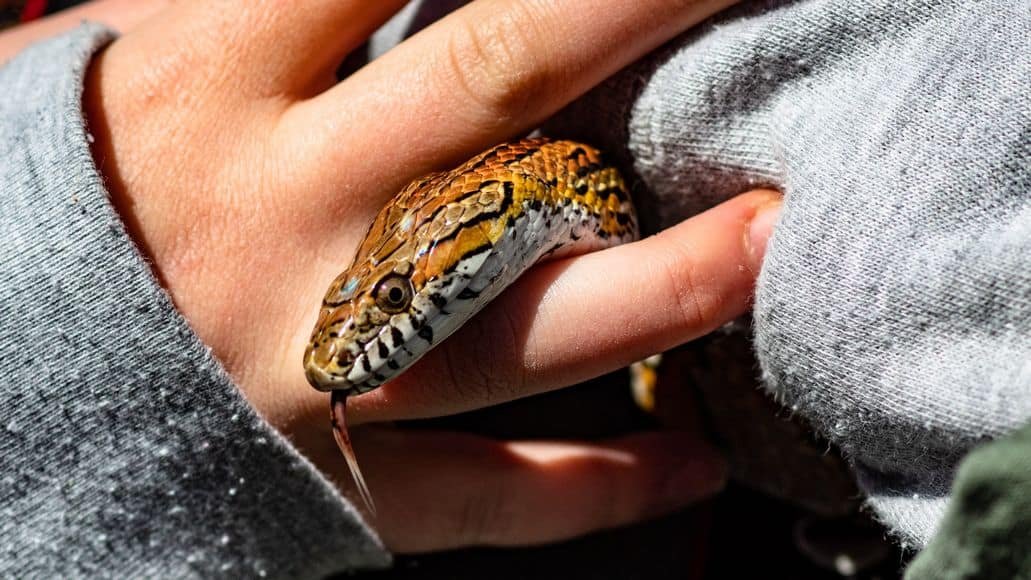
In The Wild
In the wild, these incredible predators keep vermin populations at bay and, given the overwhelming reproductive ability of vermin, this is huge!
Not only do they keep bursting populations at bay but they’re defenders of the land too. Amazingly, they’re known to also hunt venomous snake species.
With all these factors combined, we can imagine how things would be without them. Every animal plays a part in the environment and non-venomous snakes are no exception.
We don’t really hear about them as much as we should, due to the venomous villains getting all of the attention. These underrepresented superheroes really have a big impact on the world which just adds to their cool factor.
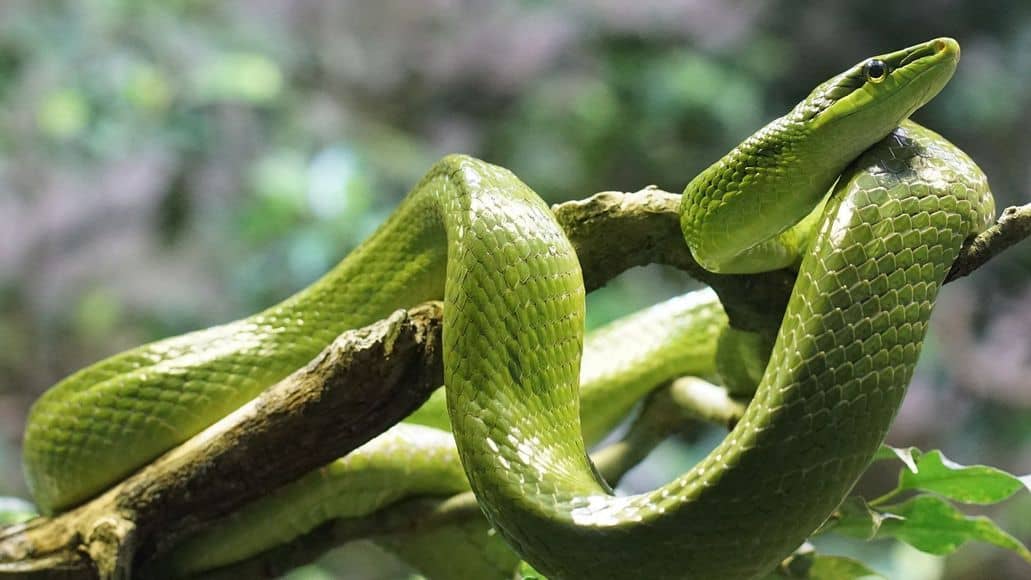
As mentioned, they play a big part in teaching budding snake keepers too. Look at them as the training wheels of the snake world – without them, would we safely be able to progress to other snakes?
Many people decide to only keep non-venomous snakes and never make the transition to venomous ones. And why not? They’re hugely attractive as pets and much easier to care for.
Non-Venomous Snakes In The US
The US is home to 21 species of venomous snakes, but it also houses a much larger population of non-venomous species. There is no simple way to tell the difference between a poisonous and non-poisonous snake. You just have to learn the patterns, behavior and habitats of individual species to be able to identify them correctly.
List Of Non-Venomous Snakes
We mentioned previously that snakes come in all shapes and sizes and this really is apparent here. The largest snakes species in the world are non-venomous, as are the smallest. Here is an example of a large, a medium and a small non-toxic snake.
Large – Anaconda
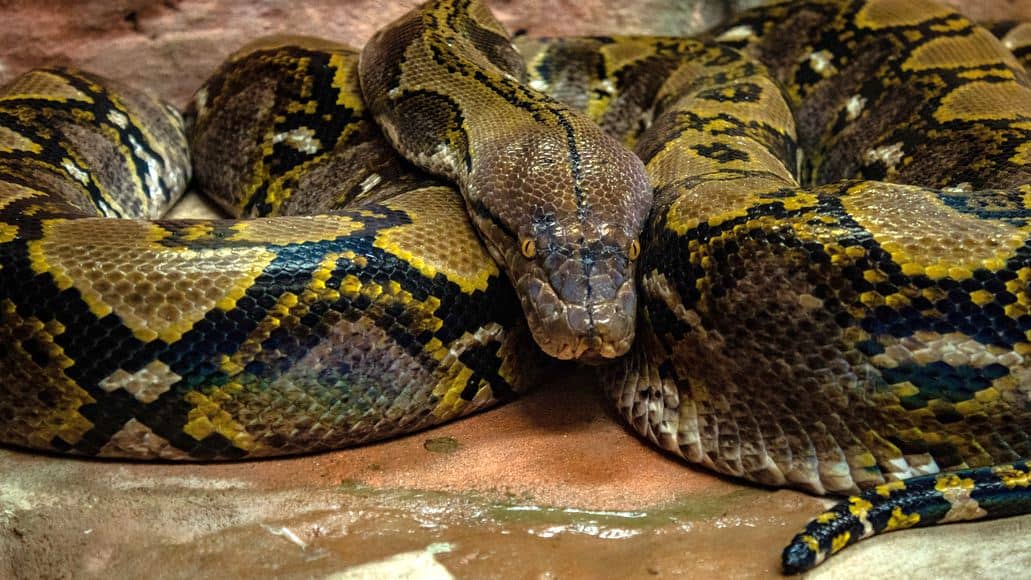
This beast had an entire movie made about it. The anaconda is known as the biggest snake to roam the planet (though the actual record is held by the reticulated python) and really has solidified itself as the king of snakes.
Anacondas are known to grow anywhere to a massive 17 to 30 feet. Despite the huge size, some master snake handlers keep anacondas as pets. This is not recommended, however, unless you know what you are doing and you have atone of space for this giant snake.
Medium – Corn Snake
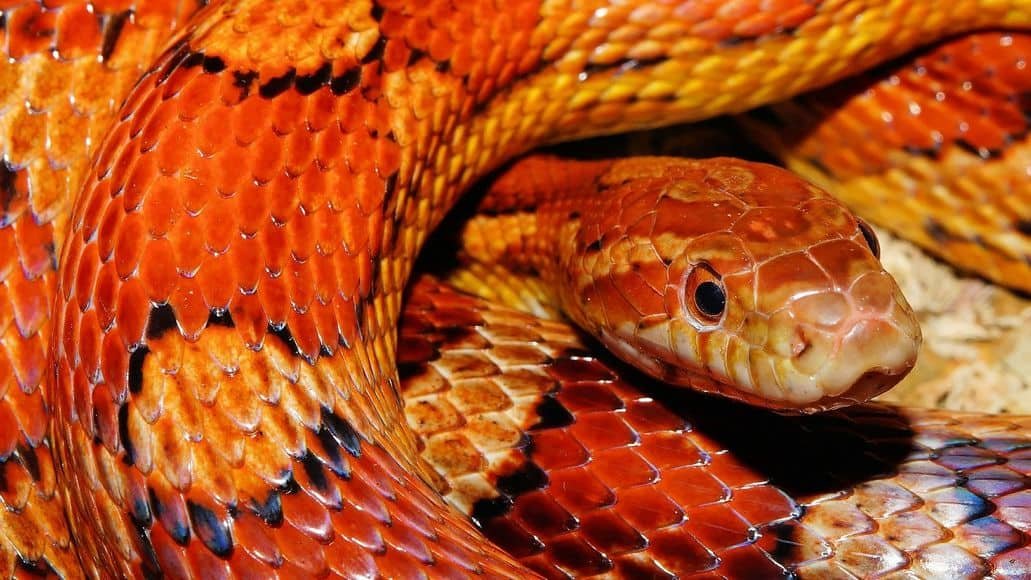
Coming in at only 3 to 5 feet, the corn snake is very receptive to human interaction. A very easy to handle a snake that will find comfort in the palm of your hand.
If you’re considering becoming a snake owner, this is a great starting point. Read corn snake vs ball python for a comparison between these two species, which are the two most popular pet snakes.
Medium – Rough Green Snake
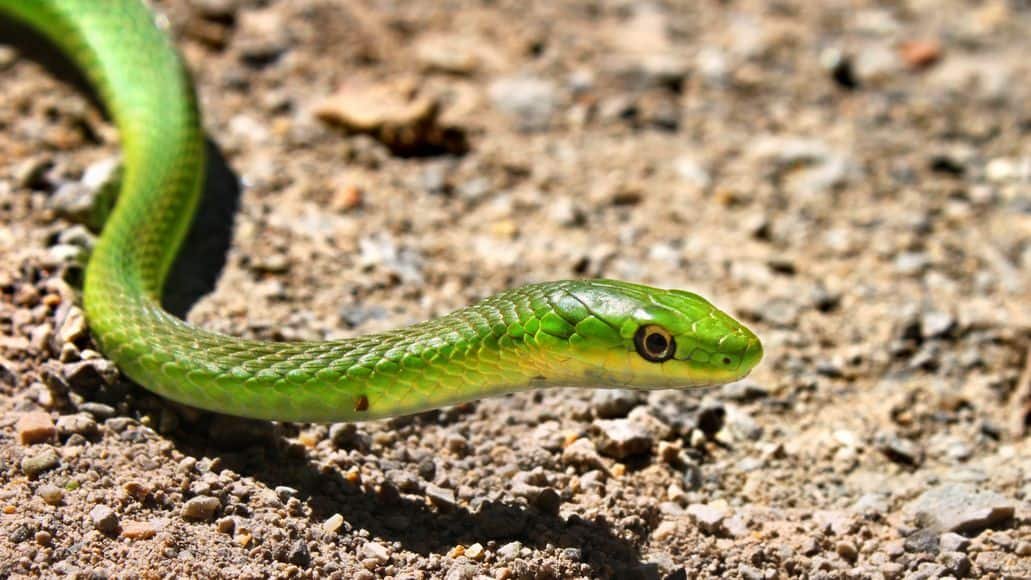
This cute little serpent is quite popular as a first-time pet. The rough green snake is extremely easy to handle and isn’t dangerous at all. It follows a very easy to maintain diet of small critters and generally looks after itself quite well. It can grow to around 2 to 3 feet long.
Small – Ringneck Snake
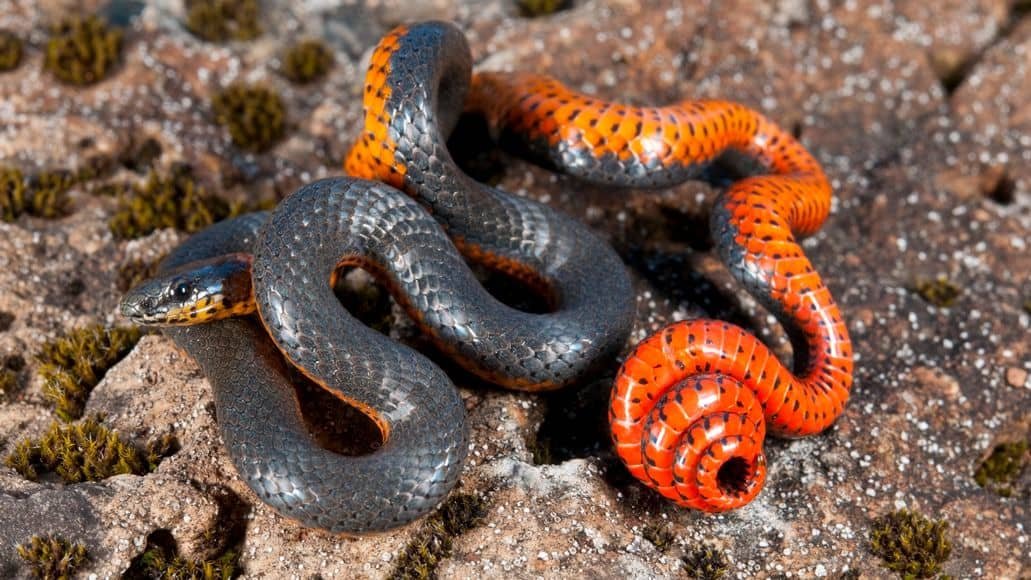
The ringneck snake only grows to be 10 to 15 inches in length. It takes up very little space, making it a great pet snake for those with small apartments. It looks stunning and actually appears like a dangerous venomous snake. But it is completely harmless and only eats small critters, like worms or insects.
Non-Venomous Snake Bite
A misconception we don’t want you to leave here with is that these animals are totally safe due to them not being venomous. some of them still have extremely sharp teeth capable of causing serious damage.
Bites are always nasty, no matter what animal they’re from. But they’re part of the training process to own a pet snake. As time goes on, you’ll learn as an owner and become more refined, knowing your pet’s behavior like the back of your hand. At this point of comfort, you’ll truly be able to construct a bond with your pet.
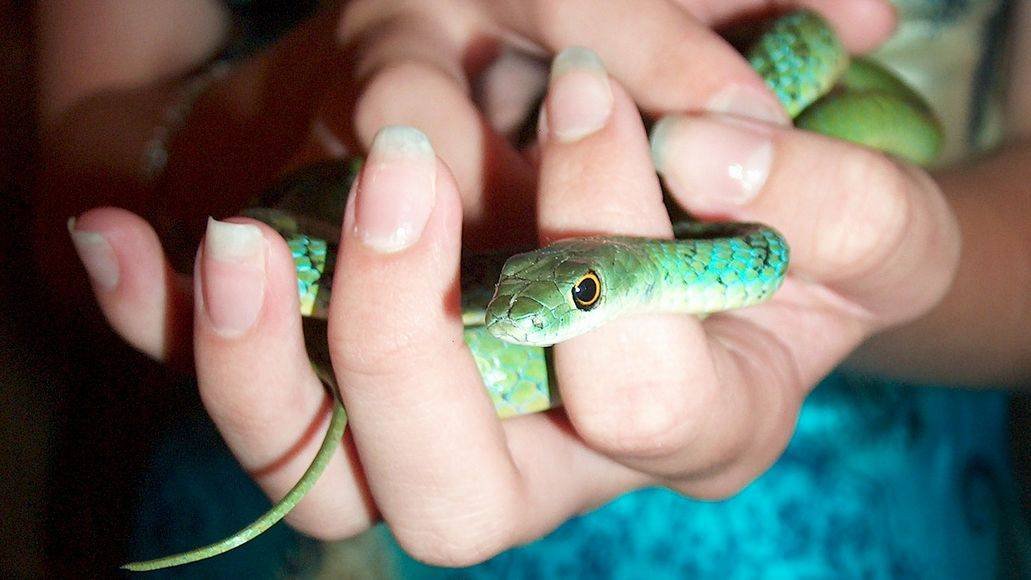
Ensure a first aid kit is present at all times and preferably close to your pet’s enclosure room. It’s always better to be prepared and in the rare case of a bite, you can easily treat it and resolve the situation. The first step of action is to secure your pet.
From here, apply pressure to stop any bleeding and locate your first aid kit. Non-venomous snakes can yield infections. Ensuring you have a form of disinfectant nearby is essential in order to combat the possibility of bacteria entering the wound.
Wash it thoroughly with soap and water and then apply the disinfectant. If you notice the wound is beginning to get infected, seek medical attention.
Distinguishing A Non-Venomous Snake From A Venomous Snake
Ultimately, you should always approach snakes with caution as you never really know what species they are until you get close. But snakes can strike if they feel threatened, which is exactly what they feel when you come closer. Getting close to a snake you have no experience with is always a risk, so exercise caution.
Professionals are able to identify them by sight, but to do that, you need to be familiar with each individual species. The one true way to find out whether a snake is venomous is to test its bite, but by that point, it’s too late!
The key is to make sure you’re educated regarding the area you’re in. Understand the environment and know exactly which species call it home. If you know what each one looks like and you know which ones are difficult to distinguish, you will be able to identify any potential danger.
Non-Venomous Snakes: Final Thoughts
Non-venomous snakes may not be as fascinating to the average person as venomous snakes, but they have just as important a place in the world. As pet owners, they are a much better idea than venomous snakes.
Owning a snake is a unique and rewarding experience and we highly recommend you make yours a non-venomous snake. Especially if it is your first one.
Braden Bills says
I want to get a snake as a pet, but I’m not sure what kind of snake to choose. It makes sense that I would want to get a non-venomous snake! I can see how that would be a good choice for safety purposes.